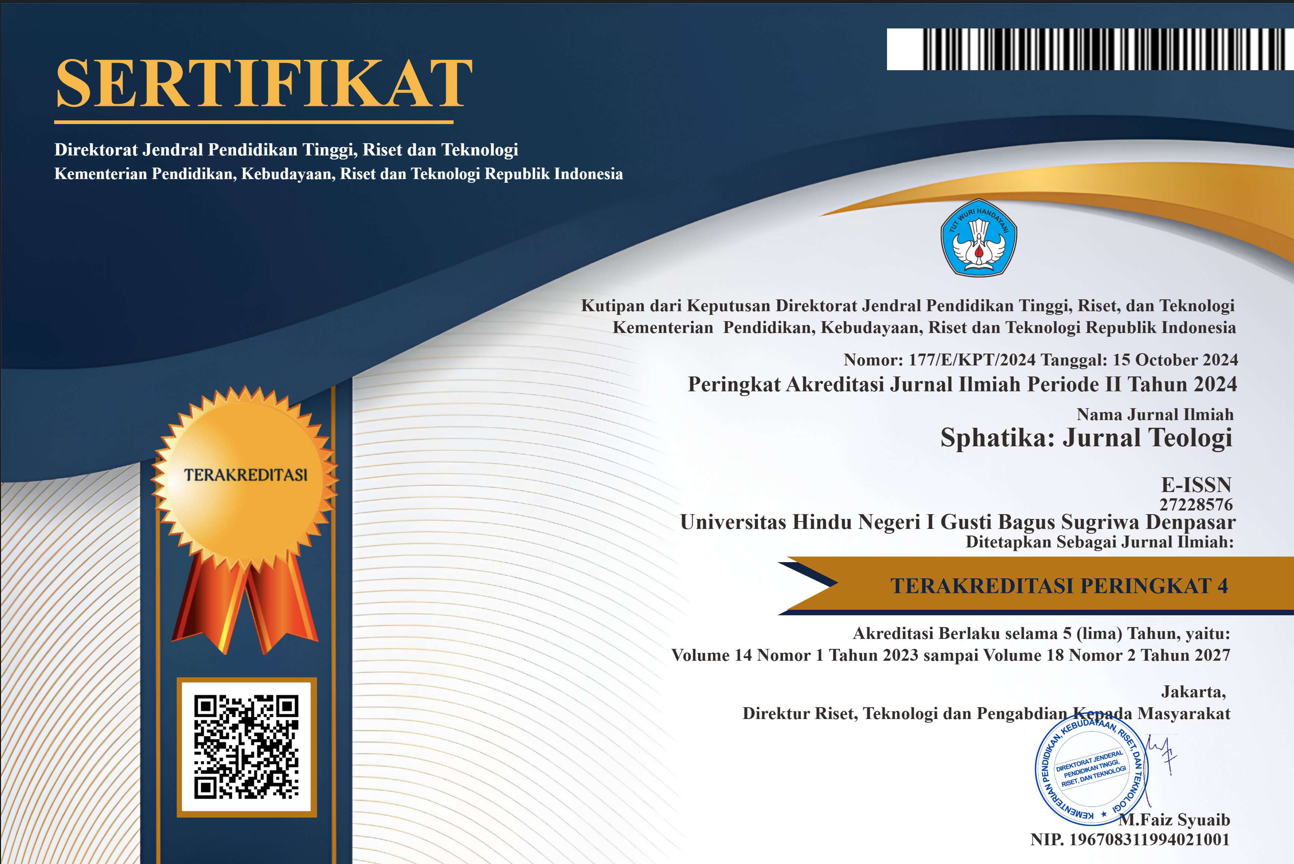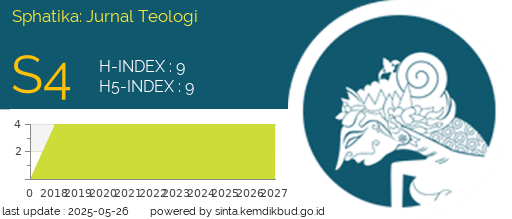Teologi Kama: Deva, Poros Kehidupan, dan Kenikmatan
DOI:
https://doi.org/10.25078/sphatika.v12i2.1125Abstract
Kama is an eternal human matter. Every civilization traces it deeply. India in the context of Hindu civilization is one that is very massive in discussing it and it is stated in both literary works and reliefs of sacred buildings. The discussion not only concerns about sexual relations and their behavior, but tries to explore the secret spaces that are in it. When the existence of the kama leaves a side of the secret that is not able to be revealed, then appear the form of the Kama God who represents kama itself, so that the human mind is able to reach it. This work descriptively describes aspects of the theology of kama extracted from text sources. In the divinity map, Kama is a God or is called a Kama God. Then, the Siva-Parvati, Rama-Sita, and Radha-Krishna relations formed a cluster of theologies which were the object of worship in the religious life of the Hindu community. In the reality of life, kama is associated with the art of making love and important actions in terms of regeneration for the continuity of life.
References
Benton, Catherine, 2006. God of desire: tales of Kamadeva in Sanskrit story literature. Albany, N.Y: State University of New York Press.
Burton, Richard (trans.). 1883. The Kama Sutra of Vatsyayana. At “sacred-texts.com.”
Burton, Sir Richard. 2001. The Ananga Ranga. Blackmask Online. Cantarella, Eva (2005). "Gender, Sexuality, and Law". In Gagarin, Michael; Cohen, David (eds.). The Cambridge Companion to Greek Law. Cambridge: Cambridge University Press. Edgerton, F. 1912. “A Hindu Book of Tales: The Vikramacarita”. American Journal of Philology. 33 (3). Flood, Gavin, 1996. The Meaning and context of the Purusarthas, in Julis Liner (ed.) – The Fruit of Our Desiring. Griffith, Ralph (trans.). 1895. The Hymns of the Rigveda Book X, Hymn CXXIX, Verse 4, pp 575
Hay, Stephen N and Bary, Willaim Theodore De. 1988. Sources of India Tradition. Motilal Banarsidass: India. Hindery, Roderick. 1976. “Hindu Ethics in the Ramayana”, The Journal of Religious Ethics, Vol. 4, No.2.
Klostermaier, Klaus. A Survey of Hinduism, 3rd Edition. State University of New York Press. Koller, John, 1968. “Purusartha as Human Aims”, Philosophy East and West, Vol. 18, No. 4.
Levy, Jacob. 2010. Kama sense marketing. iUniverse. Macy, Joanna "The Dialectics of Desire". Numen. BRILL. (1975). 22 (2): 145–60. Olivelle, Patrick. 1993. The Āśrama System: The History and Hermeneutics of a Religious Institution. Oxford University Press: Oxford.
Olivelle, tr. 1996. Upanisads. Oxford New York: Oxford University Press.
Prasad, R. 2008. History of Science, Philosophy and Culture in India Civilation, Vo. 12, Part 1.
Rao, GH. 1926. “The Basis of Hindu Ethics”. International Journal of Ethics, 37(1).
Sanford, A.W. 2002. “Painting Words, tasting sound: vision of Krishna in Paramanand’s Sixteenth-century devotional poetry”. Journal of the American Academy of Religion. 70 (1). Sanskrit-English Dictionary Koeln University, Germany. Suwantana, I Gede. 2018. “Teknik Sanggama dalam Teks Paururava Mansija Sutra.” Dharmasmrti. Vol. 18 No. 1. The Hindu Kama Shastra Society, 1925. The Kama Sutra of Vatsyayana. University of Toronto Archives, chapter 2. Upadhyaya SC (transl). 1965. Kama sutra of Vatsyayana Complete translation from the original Sanskrit. DB Taraporevala (Orig publication year: 1961).
















